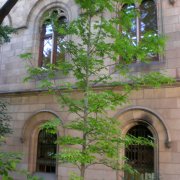Care of the tree Acer platanoides or Norway maple |
|
In the Sapindaceae family the genus Acer is classified, consisting of about 160 species of trees and shrubs from temperate regions of Europe, Asia and North America. Some species are: Acer platanoides, Acer palmatum, Acer obtusifolium, Acer negundo, Acer campestre, Acer sempervirens, Acer pseudoplatanus. Common name: Norway maple. This species is native to Northern Europe and the Caucasus. They are fast growing deciduous trees with a rounded crown that reach 25 meters (82 feet) in height. The leaves are large, lobed and have a serrated edge; they can be bright green, green and yellow or purple; in autumn its color changes to orange, yellow or red are very beautiful. The flowers appear before the leaves, they are yellow and appear in panicles. They bloom in spring. The fruits are samara-shaped. Norway maple is mainly used in streets, highways and public parks. It is also a good shade tree as an isolated specimen in medium to large gardens. Acer platanoides is a plant for the Atlantic and mountain climate that can be grown in full sun or in half exposure. It prefers that the summer is not too warm and tolerates cold and frost well. Norway maple grows in any type of well-drained soil, with organic matter and some ability to retain moisture. Planting will take place in late winter. Water frequently so that the soil is always slightly damp but not puddled. They do not resist drought. Fertilize with manure or compost in late winter or early spring. It's not advisable to prune them but you can remove damaged branches in autumn or early winter. Acer platanoides is quite resistant to the usual pests and diseases. Norway maple can be propagated from seeds sown in seedbeds. |
Images of the tree Acer platanoides or Norway maple |
Find plants
Acer platanoides or Norway maple | Care and Growing
© 2025 FavThemes



